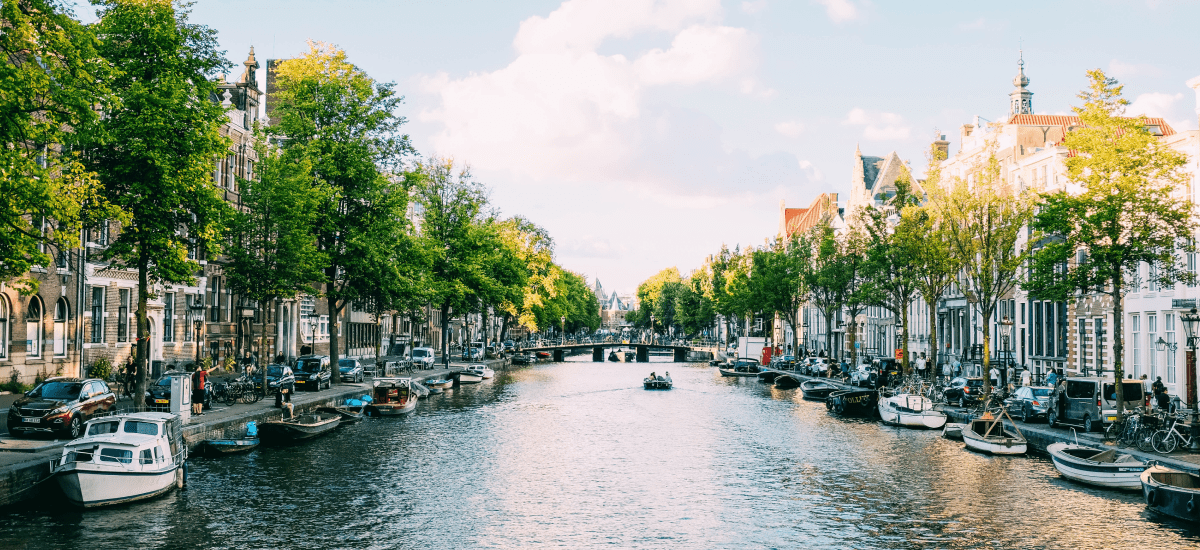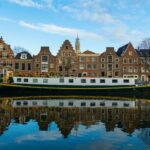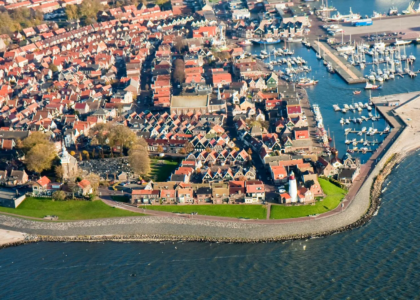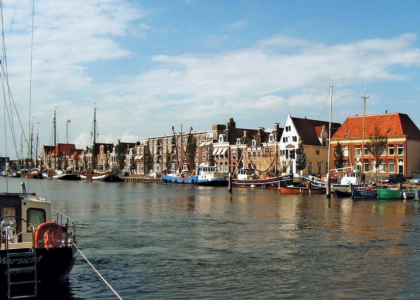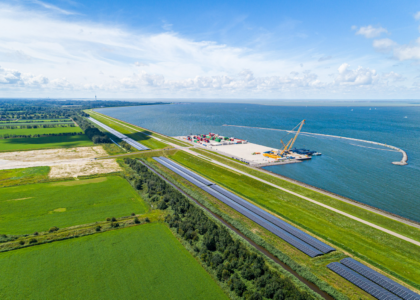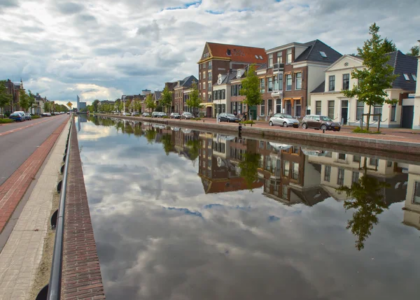The Netherlands, often referred to as Holland, is a captivating country known for its vibrant tulip fields, picturesque windmills, and rich cultural heritage. However, there seems to be some confusion surrounding the terms “Netherlands” and “Holland.” Are they interchangeable? What sets them apart? By the end, you will have a clear understanding of these terms and be able to differentiate between them effortlessly.
The Historical Context
To comprehend the discrepancy between the Netherlands and Holland, we must embark on a journey through history. The Netherlands, or the Kingdom of the Netherlands, is a sovereign state located in Northwestern Europe. It comprises twelve provinces, each with its own unique characteristics and cultural identity. The historical origins of the Netherlands can be traced back to the 16th century, when the Dutch fought for independence from Spanish rule.
The Birth of Holland
In the midst of the fight for independence, a prominent region within the Netherlands emerged: Holland. Holland, which comprises the provinces of North Holland and South Holland, played a crucial role in the formation of the Dutch Republic. It was a flourishing hub of trade, maritime exploration, and artistic endeavors, including the renowned works of Dutch masters such as Rembrandt and Vermeer.
Geographic Distinctions
When considering the Netherlands vs Holland distinction, it is essential to examine the geographic boundaries of these terms.
The Netherlands: A Broader Perspective
The term “the Netherlands” encompasses the entire country, extending beyond the provinces of North Holland and South Holland. It includes twelve provinces in total: Groningen, Friesland, Drenthe, Overijssel, Flevoland, Gelderland, Utrecht, North Brabant, Limburg, and the aforementioned North Holland and South Holland.
Holland: A Regional Subset
In contrast, Holland is a regional subset of the Netherlands. It solely consists of the provinces of North Holland and South Holland, encompassing iconic cities such as Amsterdam, Rotterdam, The Hague, and Haarlem. Due to the historical significance of these provinces, the term “Holland” has often been used colloquially and internationally to refer to the entire Netherlands. However, it is important to remember that Holland represents only a part of the broader Dutch nation.
Cultural Significance
The Netherlands and Holland exhibit cultural nuances and contributions that have left an indelible mark on the world stage.
Dutch Culture: Embracing Diversity
The Dutch culture encompasses a rich tapestry of traditions, art, cuisine, and language. The Netherlands is celebrated for its commitment to inclusivity, tolerance, and social progress. The Dutch people are known for their open-mindedness, directness, and pragmatic approach to life. This cultural mindset has fostered an environment conducive to innovation, resulting in Dutch advancements in fields such as technology, design, and sustainable development.
Holland: A Cultural Powerhouse
Holland, as a cultural powerhouse within the Netherlands, has made substantial contributions to the arts and sciences. It served as a thriving center for the Dutch Golden Age, during which celebrated artists like Rembrandt and Vermeer created their masterpieces. Additionally, Holland boasts world-class museums, including the Rijksmuseum and the Van Gogh Museum, which showcase an extensive collection of artistic treasures.
Netherlands vs Holland: Common Misconceptions
Despite efforts to clarify the distinction between the Netherlands and Holland, various misconceptions persist. Let’s address some of the most common misconceptions surrounding these terms.
- Misconception 1: The Netherlands and Holland are synonymous.
Although Holland is often informally used to refer to the entire Netherlands, this is not technically accurate. The Netherlands encompasses twelve provinces, whereas Holland solely represents the provinces of North Holland and South Holland.
- Misconception 2: The Netherlands is all about tulips and windmills.
While tulips and windmills are indeed iconic symbols associated with the Netherlands, they do not exclusively define the entirety of Dutch culture. The Netherlands is a diverse country with a myriad of landscapes, traditions, and attractions that extend beyond these quintessential images.
The Economic Powerhouse: Netherlands and Holland
The economic prowess of the Netherlands and Holland plays a significant role in their global reputation. Let’s explore the economic aspects that contribute to their success.
1. Innovation and Entrepreneurship
The Netherlands has fostered an environment that encourages innovation and entrepreneurship. The country boasts a robust startup ecosystem, with renowned tech hubs such as Eindhoven and Delft. These centers of innovation have produced groundbreaking technologies and startups that have gained international recognition. Moreover, the Dutch government actively supports entrepreneurship through initiatives, grants, and favorable business regulations.
2. International Trade and Shipping
The Netherlands, with its strategic location, has long been a key player in international trade and shipping. Rotterdam, Europe’s largest port, is a vital gateway for goods entering and leaving the continent. The port’s efficient infrastructure and extensive logistics network have made it a favored destination for global trade. Additionally, the Netherlands is home to many multinational corporations that excel in diverse sectors, including logistics, agriculture, and high-tech industries.
3. Sustainable Development
The Netherlands is at the forefront of sustainable development initiatives. The country has embraced renewable energy sources and implements eco-friendly practices to mitigate environmental challenges. Wind farms, solar energy projects, and innovative water management systems are just a few examples of the Netherlands’ commitment to sustainability. Holland, being part of the Netherlands, actively contributes to these efforts and showcases its dedication to preserving the environment.
Dutch Cuisine: A Gastronomic Delight
Dutch cuisine offers a diverse range of flavors and dishes that reflect the country’s history and regional variations. Here are some delectable examples of Dutch cuisine:
- Stroopwafels: These sweet, caramel-filled waffle cookies are a Dutch delicacy. They consist of two thin waffles with a caramel syrup filling in between—a delightful treat to enjoy with a cup of coffee or tea.
- Haring (Hollandse Nieuwe): Haring is a popular Dutch delicacy, especially during the summer months. The raw herring is traditionally served with chopped onions and pickles and is consumed by holding it by the tail and taking a bite.
- Bitterballen: Bitterballen are savory, deep-fried meatballs with a crispy outer crust and a soft, flavorful interior. They are typically filled with a mixture of beef or veal ragout, spices, and herbs. Bitterballen are often enjoyed as a snack with mustard.
- Poffertjes: Poffertjes are mini, fluffy pancakes made from a batter of buckwheat flour, yeast, milk, and eggs. They are typically served with powdered sugar and butter, creating a delightful treat that is enjoyed by both children and adults.
- Cheese: The Netherlands is renowned for its cheese production, and a wide variety of cheeses are produced across the country. Gouda and Edam are among the most famous Dutch cheeses, known for their distinctive flavors and textures.
Exploring the Dutch Cycling Culture
Cycling is deeply ingrained in Dutch culture and is an integral part of everyday life. Here’s a glimpse into the vibrant Dutch cycling culture:
- Infrastructure: The Netherlands boasts an extensive network of well-maintained cycling paths, making it safe and convenient for cyclists to navigate cities and rural areas. Dedicated cycling lanes, traffic signals, and bike-friendly infrastructure are common throughout the country.
- Bicycle-Friendly Cities: Dutch cities such as Amsterdam, Utrecht, and Groningen are known for their bicycle-friendly environments. These cities prioritize cycling infrastructure, providing ample bike parking facilities and promoting cycling as a preferred mode of transportation.
- Bicycles as a Lifestyle: Dutch people of all ages and backgrounds embrace cycling as a way of life. Bicycles are used for commuting, leisurely rides, and even transporting groceries and children. Cycling promotes a healthy lifestyle and contributes to a sustainable and environmentally friendly society.
- Cycling Events: The Netherlands hosts numerous cycling events and races, attracting enthusiasts from around the world. The most famous event is the Tour de France Grand Depart, which has commenced in the Netherlands multiple times. Additionally, the country celebrates “Fiets naar je Werk Dag” (Bike to Work Day) to encourage cycling as a daily commuting option.
- Bicycle Culture Innovations: Dutch ingenuity extends to bicycle culture as well. From innovative bicycle designs, such as cargo bikes and electric bikes, to initiatives like bicycle sharing programs and bike-friendly cafes, the Netherlands continuously strives to enhance the cycling experience.
Conclusion
In conclusion, the Netherlands vs Holland debate revolves around historical, geographic, and cultural nuances. The Netherlands encompasses twelve provinces, whereas Holland solely represents the provinces of North Holland and South Holland. Despite colloquial usage, it is important to acknowledge the broader scope of the Netherlands. By understanding these distinctions, you can navigate conversations about the Netherlands and Holland with confidence and accuracy.

